Review: Alcatel Idol 4S with Windows 10
Nov 10, 2016, 4:30 PM by Eric M. Zeman
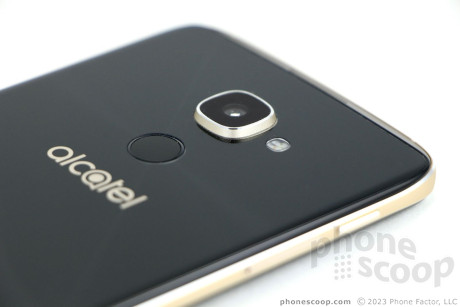
Alcatel modified its impressive Idol 4S and swapped Android for Windows. This high-end Windows 10 handset boasts a solid spec sheet, attractive design, good build quality, and a reasonable price point. Alcatel did, however, make several compromises that hold this phone back. Here is Phonescoop's in-depth report.
Hardware
Is It Your Type?
The Idol 4S with Windows 10 is a rehash of Alcatel's best-ever Android phone. The company changed up several key specs, improved performance along the way, but left the appealing metal-and-glass design unsullied. If you're looking for a high-end Windows 10 experience, look no further than the Idol 4S.
Body
Outwardly, the only difference between the Android-based Idol 4S and the new Windows-based Idol 4S is the coloration. Where the Android version was a deep blue with gray metal, the Windows version has black glass and gold metal. It's kind of pretty.
The Idol 4S is Alcatel at its best as far as design is concerned. The company clearly took some cues from the likes of Samsung and Sony in crafting the phone, yet Alcatel managed to give the 4S an identity all its own.
The metal-and-glass build of the 4S for Windows trounces the current crop of other Windows 10 phones (which, to be fair, isn't that large.) The gold metal frame wraps around the outer edges of the handset. The metal is polished to a shiny finish along the edges, generating some eye-catching chamfers. The frame is sandwiched between two glass panels. Both the front and rear pieces of glass have curved edges, which help smooth over the seam between metal and glass.
The Idol 4S is a fairly large phone, due mostly to its 5.5-inch screen. Its dimensions are close to that of the OnePlus 3 and Pixel XL, though it is not as large as the iPhone 7 Plus and LG V20. Alcatel kept the thickness in check at 0.28 inches (7mm). The phone isn't too heavy; I expected the glass and metal materials to lend it more heft, but the weight is quite nice. The 4S is a phablet, for sure, so it may not work for those with smaller hands. I didn't have any trouble using it over the course of a week, but it does require two hands at times. The phone's slippery surfaces allow it to slide into pockets easily.
Alcatel did a great job manufacturing the 4S. The materials are excellent and fitted together tightly. The phone feels like a quality piece of hardware. Nothing about this phone is cheap.
Alcatel located the stereo speakers in the metal frame itself (rather than cut the glass). You can see the small grille holes that have been drilled into the metal, but you have to look closely. The user-facing camera is the only clue as to which end is up. (It's too bad the phone isn't reversible, like the Android version.) There are no buttons or controls on the front surface, as the phone uses software buttons that come and go as needed.
Alcatel put the screen lock button at the top of Idol's left edge. (The majority of phone makers position the screen lock button in a more-reachable spot on the right side of the phone.) Despite its awkward location, the button has a great profile and excellent travel and feedback. The SIM card / memory card tray is tucked into the frame just below that. The Idol 4S for Android supports two SIM cards, but the Windows version only supports one SIM card and one microSD card. (That's a shame, but was likely mandated by T-Mobile, which sells the phone in the U.S.)
The right edge holds the volume toggle and the camera button. The volume toggle is a thin strip, but it is easy to find and use. I appreciate the profile and feedback. The camera button (called the "boom key" on the Android Idol 4S) is smack in the middle of the right edge. It's a circular button that has a big profile and is a cinch to find. In fact, it's too easy to find; I found myself pressing / activating it accidentally all the darned time. It's a shame Alcatel ditched the idea of a user-programmable button. Still, it's nice to have a dedicated camera button. You'll find the 3.5mm headphone jack on the top.
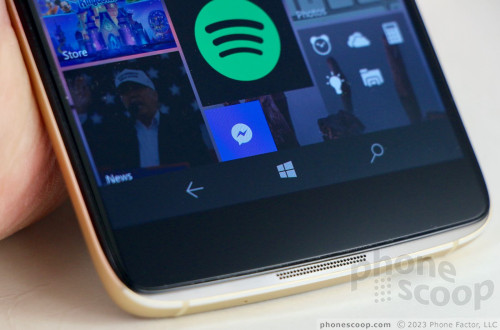
The Idol 4S with Windows swaps a microUSB port on the bottom for a USB-C port. This means more limited accessory compatibility for now, but it's also crucial to the Windows Continuum feature for full-PC behavior.
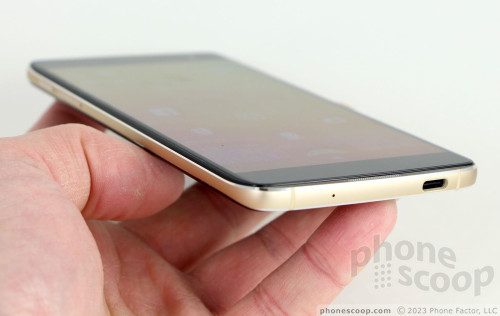
The fingerprint reader is the central focus of the rear panel. The panel is angled such that any reflected light appears to emanate from the small circle that is the fingerprint reader. The reader and the camera have gold accents to match the frame. While the reader is flush with the rear surface, the camera module juts out quite noticeably. I wish the reader were easier to find by touch. The back panel cannot be removed, so the battery is inaccessible.
The Idol 4S for Windows is every bit as good as its Android-based brother. It's a quality piece of hardware that should appeal to those seeking a classier Windows experience than what's offered by the remnants of the Lumia series.
Screen
Alcatel dropped the quad HD resolution of the Android 4S for a full HD panel on the Windows 4S. The Windows 4S has a 5.5-inch screen and there's no question it's attractive. It delivers sharp on-screen elements, plenty of brightness, and good viewing angles. I found the screen worked well indoors and out, but you will need to crank up the brightness when outdoors.
The loss of quad HD resolution is a big blow to the 4S's virtual reality performance. Quad HD is definitely the way to go for VR. With 1.6 million fewer pixels, the Windows 4S doesn't provide nearly the level of performance I want from VR. The experience is much better on higher-resolution screens, like the one on the Android version.
Signal
The Idol 4S with Windows is limited when compared to the Android version. Where Alcatel is selling the Android 4S unlocked with decent LTE support, the Windows Idol 4S is locked to T-Mobile and, worse, only supports T-Mobile's older LTE bands (2, 4, 12). (It would be nice if it supported band 66 like the LG V20, although this isn't a deal-breaker.)
That said, T-Mobile customers should be happy with the Idol 4S. The phone connected every call on the first dial, no matter the network conditions. It dropped one call on the highway, but did not send any calls directly to voicemail. Data speeds were very good. I didn't have any trouble streaming Spotify or YouTube over the network, but remember that T-Mobile caps music/video quality to lower resolutions. App downloads were always swift. Popular smartphone apps, such as Facebook, Instagram, and email, all worked flawlessly thanks to the Idol's good data performance.
Sound
Alcatel prides itself on making loud phones and the Idol 4S is pretty darned loud. The earpiece delivers an insane amount of sound to your ear canal. Volume doesn't necessarily equate quality, and the 4S suffers a bit from distortion at higher volume levels. Call clarity is average when compared to other T-Mobile devices. The incredible volume simply means you can hear calls almost everywhere you take the phone. People I spoke to via the 4S said I sounded "clear."
The speakerphone is crazy loud, and it, too, suffers from distortion. You can hear calls in the car, in the mall, and probably at an AC/DC concert, but words are still sometimes hard to decipher.
Ringers and alerts can be set loud enough to induce panic attacks.
The 4S is a fine companion for listening to music. The stereo speakers work well, particularly when you want to watch some video. It puts out enough sound for one big room, or a small outdoor deck/patio area.
Battery
The Idol 4S with Windows packs the same 3,000 mAh battery as found in the Android version. The good news here is that it performed better than the Android version, which is to say it had a bit more juice left at the end of the day. Where the Android Idol 4S was gasping for breath at bedtime, the Windows version still had a solid 20% left, if not a bit more. This is likely due to the lower resolution of the display, although the OS and processor differences may also be playing a role. It's worth noting that I never killed off the battery entirely, not even on days I took the VR apps for a spin.
The phone includes the base Windows Mobile battery saver tool, but nothing extra from Alcatel. It can be customized to a small degree in order to tone down some behaviors to cut back on power use.
Thankfully, the 4S supports fast charging and ships with a fast charger. I you get home from work and have only 40% battery left, plugging it in for 15 or 20 minutes will get you back up to 75% or 80%.
Bluetooth, GPS, NFC, WiFi
The Idol 4S has the expected set of secondary radios and they mostly get the job done.
The Bluetooth radio was able to connect to the majority of devices without trouble. I was pleased with calls routed through a mono headset, which were much clearer than I expected. Calls sent to my car's hands-free system were solid, too. Music was quite good when pushed to a Bluetooth speaker, though the phone's internal speakers are often good enough.
GPS functioned very well. Together with the Windows Maps app, the Idol 4S was able to locate me in under 10 seconds and accuracy was as good as about 50 feet. The phone allowed for trouble-free, real-time navigation between points with ease.
The WiFi radio worked well.
Unlike the Android version, the Windows 4S does not have NFC.
Software
Lock Screen
The Windows 10 lock screen is fairly decent as far as managing incoming alerts is concerned.
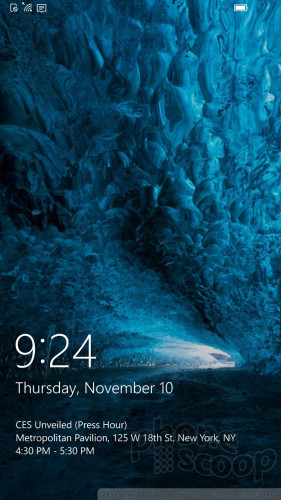
Nothing pops up on its own, so you do need to press the screen lock button or double-press the glass to view any lock screen content. The 4S lock screen shows a large clock, the date, and user-customizable notifications on top of your wallpaper. You can elect to show basic badge count notifications from several apps (email, calendar, phone, messaging) on the screen. Moreover, you may prioritize one of these on the lock screen. I've always prefered prioritizing the calendar app because it highlights my next event.
You can choose whether or not the Action Center is accessible from this screen. The Action Center (which is similar to Android's Quick Settings menu) drops down for access to certain controls and in-depth notifications. I like that you can respond to notifications directly from the Action Center.
The Idol 4S for Windows includes a fingerprint sensor. The Windows software will walk you through the process of adding fingerprints and it's fairly painless. The reader is quick and accurate. If you're not interested in the fingerprint sensor, you can choose a PIN or password to secure the phone instead. The fingerprint reader is the fastest way to unlock the phone as long is you're already holding the device in your hand. If the Idol 4S is sitting on a table or desk you have to double tap the screen, swipe up the notifications, and enter your PIN.
Home Screens
Windows 10 Mobile runs on the Idol 4S as it does on all other Windows handsets. It includes dynamic Live Tiles on the Start screen, as well as an array of drop-down and slide-over panels for controlling various aspects of the phone.
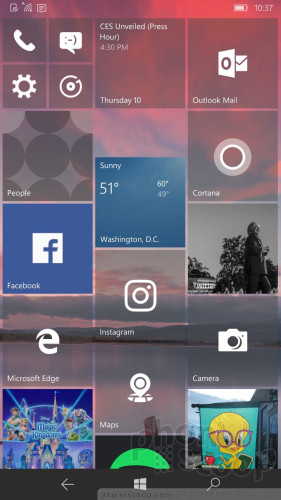
You can arrange the Live Tiles into three columns, and the tiles are available in small, medium, and large sizes. Many of the Live Tiles update automatically with content and notifications, while others are just simple app icons. I like that you can manage the transparency of the tiles as well as their color. The Start screen, arranged in an unending vertical column, supports folders, changing wallpapers, and so on.
The full app menu is a long list of apps sorted alphabetically in a single column. A search bar at the top is the quickest way to find apps if you have dozens or more installed.
The system settings are broken down into groups and each group clearly spells out what controls or tools are within. As in the app menu, a search bar makes finding individual settings a breeze. You can make all the typical adjustments to the phone, such as colors, themes, ringers and alert sounds, and so on. It's all fairly easy to digest.
The Idol 4S is the fastest Windows 10 device I've used. The Snapdragon 820 processor and 4 GB of RAM are more than enough power for this handset, especially considering the full HD screen. It's like Alcatel put a Ferrari engine into a Ford. The Idol 4S performed smoothly across the board and never felt sluggish.
Camera
The dedicated camera button is configurable. You can double press to open the camera from the lock screen, or set it to launch and fire off a shot. Once pressed, the camera launches quickly. The 4S uses the default Windows 10 app, which is straightforward and easy to use.
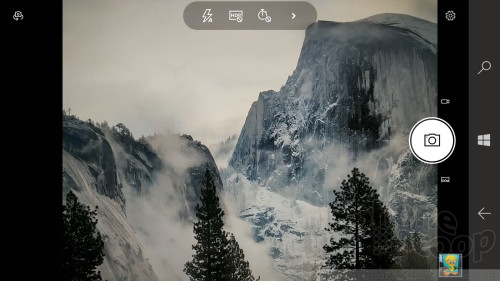
There are only three basic shooting modes: camera, video, and panorama. You can program the camera button to take single images, or fire a burst / shoot video with a long press. You can touch the image to lock in focus, but you always have to use the shutter button to capture images.
A small strip adorns the top of the viewfinder and holds the controls that let you switch to the user-facing camera, toggle through the flash settings, and turn HDR on or off (there's no “auto” HDR setting). The strip expands to reveal the Pro shooting tools, which include full manual controls. When in Pro mode, you can manage white balance, exposure, ISO, brightness, and focus all on your own. Sadly, shutter speeds are limited to 0.6 seconds at the slowest, which limits creative potential. A timelapse function is available from within the settings tools.
Beyond these tools, there are no other shooting modes included. For example, there's no bokeh, no filters, no sport mode, no night/evening mode, etc. However you can download Lenses — which add back some of these features — from the Windows Store. (Sadly, Microsoft's Lumia-branded Lenses are off-limits.)
The camera performs well, thanks to the Snapdragon 820 chip. It takes but an instant for the phone to focus, capture images, save them, and get ready to shoot another images. Shooting with HDR takes a lot longer compared to other phones I've tested lately.
Photos
Alcatel gave the Windows 4S a 21-megapixel Sony Exmor camera sensor, quite a bump over the 16-megapixel shooter in the Android version. The camera app defaults to the 16:9 aspect ratio, which crops images to a lower resolution. You need to change the setting to 4:3 to get the full pixel count.
In general, the Windows 4S takes sharper images than the Android 4S and dramatically better pictures than any other Windows phone I've reviewed this year. As sharp as the pictures are, exposure and white balance could both be a bit more consistent. The 4S has a little bit of trouble with low-light scenes, and the HDR function didn't produce results that are as dynamic as other phones I've tested recently. There's no doubt the Idol 4S is a good option for Windows Phone users.
The 8-megapixel selfie cam does a decent job, too. It doesn't offer any features other than a selfie flash (screen burst). Using the flash helps a LOT when taking selfies indoors. I highly recommend it.
Selfie

The phone can capture video up to 4K, but you'll be best served by sticking with full HD. The phone struggled a bit when recording 4K footage and got really, really warm. The 4K results look okay, but not significantly better than full HD footage.
Bottom line: the Idol 4S with Windows is a solid everyday shooter.
T-Mobile / Microsoft Stuff
T-Mobile kept the bloatware to a minimum. In fact, the T-Mobile account management app is the only T-Mobile app pre-installed. Some third-party apps such as Uber are on board, but Windows allows you to delete most unwanted apps with ease.
Perhaps most importantly, the 4S supports Continuum, which allows it to serve as a full Windows 10 PC when connected to the appropriate set of accessories. I tested it with my Continuum hub and found performance to be on par with the Lumia 950. That means the device is a serviceable PC substitute, but it's not the best experience on earth. Specifically, apps felt a bit slow in Continuum mode. Screen transitions were also a bit laggy here and there. You can still get away with using the Idol 4S as a full computer, but I'd shy away from processor-intensive tasks like gaming. You'll be pleased as long as you stick to simple browsing or document editing.
Microsoft's Office productivity suite is on board, and includes Word, Excel, PowerPoint, OneNote, and OneDrive. The apps are excellent for making quick edits or creating new documents. OneDrive automatically syncs everything so your files are accessible from anywhere. The utility of these apps cannot be understated. They're fantastic. The same goes for the Outlook email app, and the Edge browser. Let's not forget the Cortana voice assistant, which gets smarter every day.
VR
The Idol 4S with Windows is the first Windows handset to ship with a VR viewer. In truth, it's the exact same viewer Alcatel offered with the Android Idol 4S. There is a good selection of VR content aboard the phone, but none of it is very good.
I was displeased with the VR experience as a whole. The viewer itself is fine, but the apps and performance of the phone in the headset simply don't match what's available to Android devices. The lower screen resolution hurts the most, but so does the lack of compatibility with known and trusted VR apps/services from Google, like YouTube VR. Right now, all my favorite VR content is that which I've shot myself using the Google Cardboard camera. None of that is accessible to the Idol 4S with Windows.
Alcatel worked with Microsoft to shoehorn VR content onto this device. Who knows what Alcatel's commitment will be to keeping this content fresh and updated.
In other words, don't buy the Idol 4S with Windows for the VR experience.
Wrap-Up
The Alcatel Idol 4S is the best Windows phone for most people because it offers a good balance of performance from the cost. It's not as powerful nor as configurable as the HP Elite X3, but it's much better than the wilted crop of handsets from Microsoft.
Alcatel did a fine job crafting an appealing piece of hardware in the Idol 4S. The metal-and-glass design is attractive and well-made. It is slim, light, easy to use, and the physical controls all function perfectly.
I'm glad to have the speedier Snapdragon 820 processor and snappier 21-megapixel camera sensor aboard. I think the Idol 4S loses something by dropping the screen resolution from quad HD to full HD, but many may appreciate the better battery life that results.
The Windows software functions fine. Microsoft's platform is workable and the productivity apps are top-notch. I wish the camera had more features and more marquee apps were available to the platform.
The Idol 4S does offer Windows Continuum, and it works, which may be a boon to busy business travelers.
The VR feature is stymied by the low-res screen and relative lack of content.
Saying the Alcatel Idol 4S is the best value of any modern Windows phone is easy, even at $480.

Comments
No messages


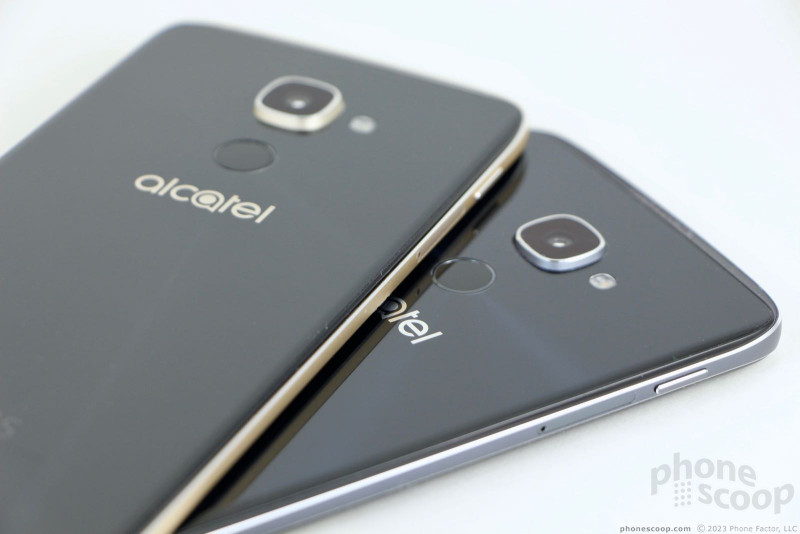



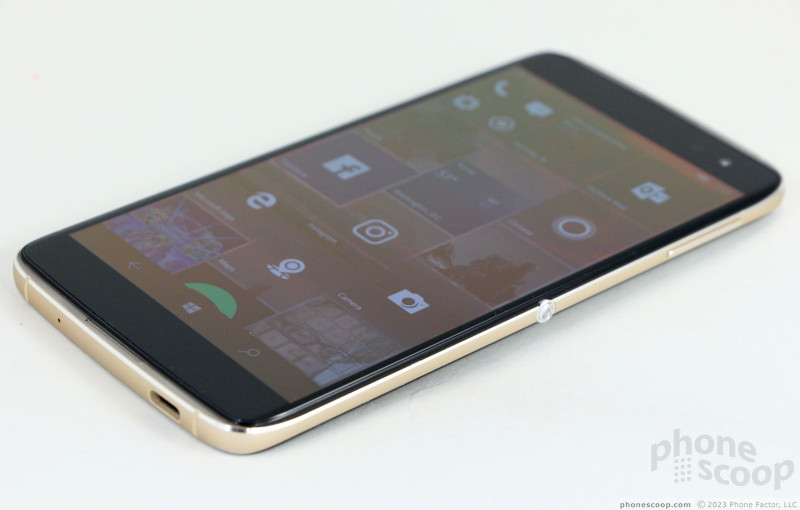

















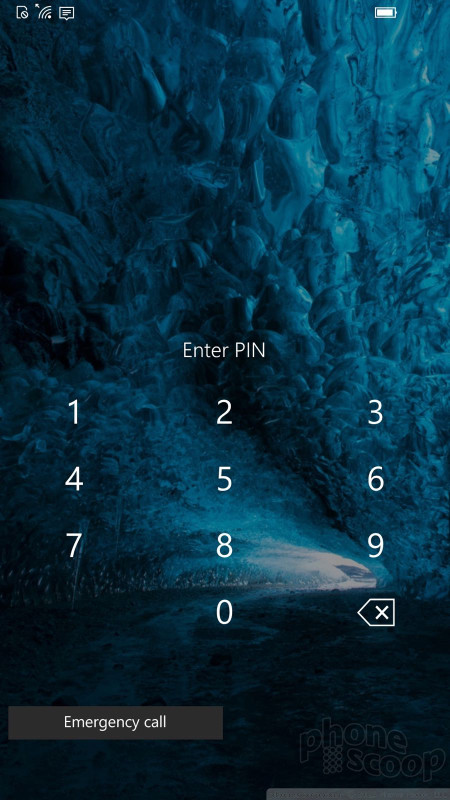




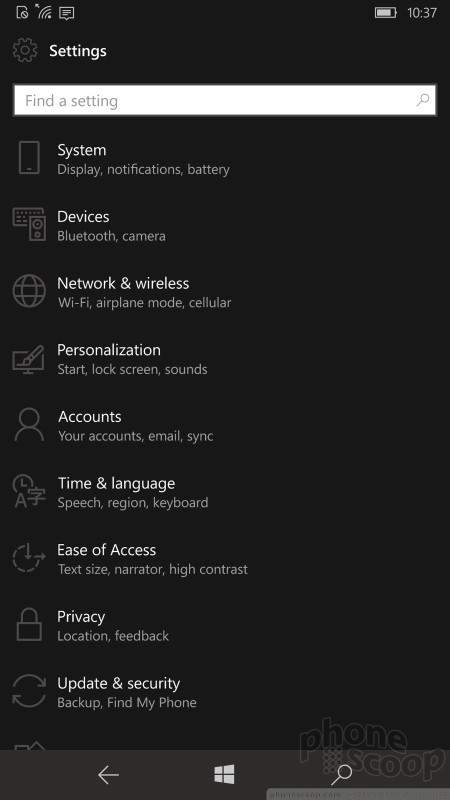










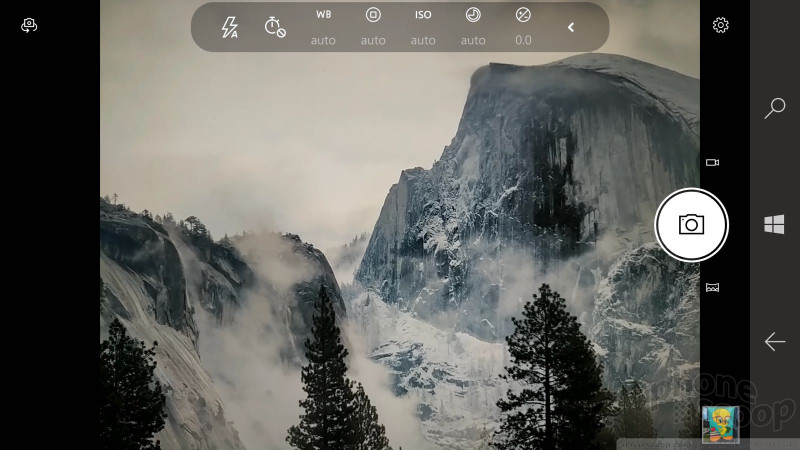







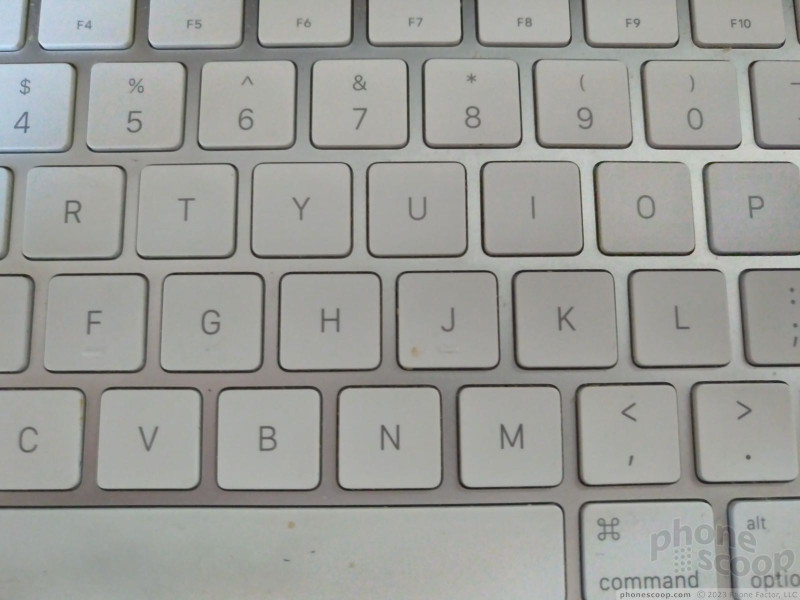
















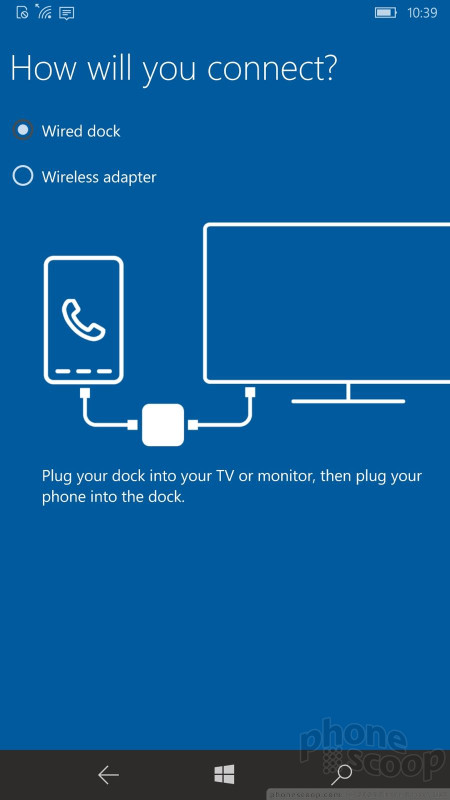





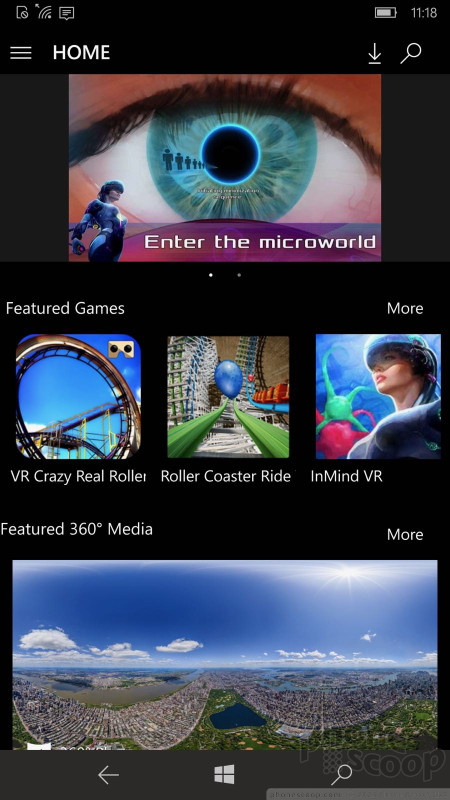





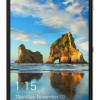 Alcatel Idol 4S with Windows Now Available Unlocked
Alcatel Idol 4S with Windows Now Available Unlocked
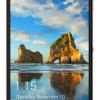 Alcatel Makes the Idol 4S with Windows Official
Alcatel Makes the Idol 4S with Windows Official
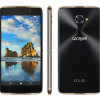 T-Mobile Outs Windows 10 VR Phone From Alcatel
T-Mobile Outs Windows 10 VR Phone From Alcatel
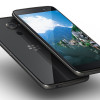 BlackBerry DTEK60 Boasts Fingerprint Sensor and Top Specs
BlackBerry DTEK60 Boasts Fingerprint Sensor and Top Specs
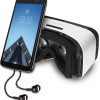 Alcatel Adds Fingerprint Reader to Idol 4S, Selling Bundle for $350
Alcatel Adds Fingerprint Reader to Idol 4S, Selling Bundle for $350
 Alcatel Idol 4S with Windows 10
Alcatel Idol 4S with Windows 10




